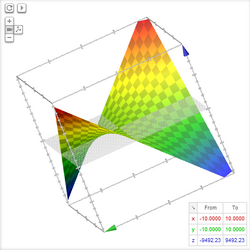mNo edit summary |
m (Pop density link added.) |
||
| Line 4: | Line 4: | ||
[[File:Eucapital.png|right|200px|European Capital]]Cities serve two basic functions: increasing and maintaining population and harvesting/manufacturing [[resources]]. |
[[File:Eucapital.png|right|200px|European Capital]]Cities serve two basic functions: increasing and maintaining population and harvesting/manufacturing [[resources]]. |
||
===Population=== |
===Population=== |
||
| − | Population is determined by a number of factors, including [[infrastructure]], [[land]], [[improvements]], population density, and city age. These control the [[commerce]], [[crime]], and [[disease]] factors that determine final population count for a city. |
+ | Population is determined by a number of factors, including [[infrastructure]], [[land]], [[improvements]], [[population density]], and city age. These control the [[commerce]], [[crime]], and [[disease]] factors that determine final population count for a city. |
====Infrastructure==== |
====Infrastructure==== |
||
Infrastructure is what gives a city its population. Before other factors are applied, the formula for population by infrastructure is: |
Infrastructure is what gives a city its population. Before other factors are applied, the formula for population by infrastructure is: |
||
| Line 76: | Line 76: | ||
$7,225,000 |
$7,225,000 |
||
|} |
|} |
||
| − | |||
[[Category:Game Information]] |
[[Category:Game Information]] |
||
Revision as of 02:52, 26 April 2014
Cities are the building blocks of nations. Each city has its own infrastructure, land area, improvements, and stats. Cities provide population as a taxpayer base for a nation. Resources are produced via improvements in cities.
Mechanics
Cities serve two basic functions: increasing and maintaining population and harvesting/manufacturing resources.
Population
Population is determined by a number of factors, including infrastructure, land, improvements, population density, and city age. These control the commerce, crime, and disease factors that determine final population count for a city.
Infrastructure
Infrastructure is what gives a city its population. Before other factors are applied, the formula for population by infrastructure is:
- Base Population = Infrastructure * 100
The cost of infrastructure increases exponentially per level, with a base price of $300. The formula for infrastructure cost is:
- Cost/Level = 0.01(X-10)^2 + 300
Disease
Disease is a negative factor applied to a city's population. The higher the disease rate, the lower the cities population will be. High population and high population density are the causes of disease. Common ways of reducing disease are increasing Land Area and building Hospitals. The formula for disease is:
- Disease% = (( 0.01(Population Density^2) - 25 ) / 100 ) + ( Infrastructure / 1000 )
The disease rate cannot exceed 100 and not go below 0. The amount of people removed from the base population figure is equal to:
- Disease Deaths = ( Disease / 10 ) + ( Infrastructure * 1000 )
Crime
Crime is another negative factor applied to a city's population. It is caused by a high population and poverty. Crime can be reduced by building Police Stations and increasing average income. The formula for crime is:
- Crime% = ((( 103 - Commerce )^2 + ( Infrastructure * 1000 )) / 111111 )
Crime cannot exceed 100 nor go below 0. The amount of people removed from the base population figure is equal to:
- Crime Deaths = ((( Crime / 10 ) * ( Infrastructure * 1000 )) - 25 )
Age
The age of a city increases its population by a percentage. Age is the last variable factored into city population, and is factored in as follows:
- Age Bonus = Normal city population * ( 1+ ( City Age in Days / 3000 ))
Constructing New Cities
Constructing new cities occurs as nations grow any no longer wish to expand within the cities they currently possess. New cities are expensive to build, but infrastructure and land in brand new cities is cheap. The formula for a new city cost is as follows:
- City Cost = 50000(X-1)^3 + 150000X + 75000
| City # | Cost ($) |
|---|---|
|
1 |
$225,000 |
|
2 |
$425,000 |
|
3 |
$925,000 |
|
4 |
$2,025,000 |
|
5 |
$4,025,000 |
|
6 |
$7,225,000 |


